Rheum x hybridum, R. rhabarbarum
Rhubarb is a beautiful, easily cultivated perennial with large, ruffled leaves and tall stalks of pink or scarlet with a delicious, sharply tart flavor.
The pretty stalks of this herbaceous vegetable (or fruit, if you prefer) are harvested throughout spring and summer and pack some serious pucker power!
When sweetened, the tangy taste is mouth-wateringly ideal for use in a range of baked goods as well as compotes, preserves, and relishes, or simply enjoy it stewed.
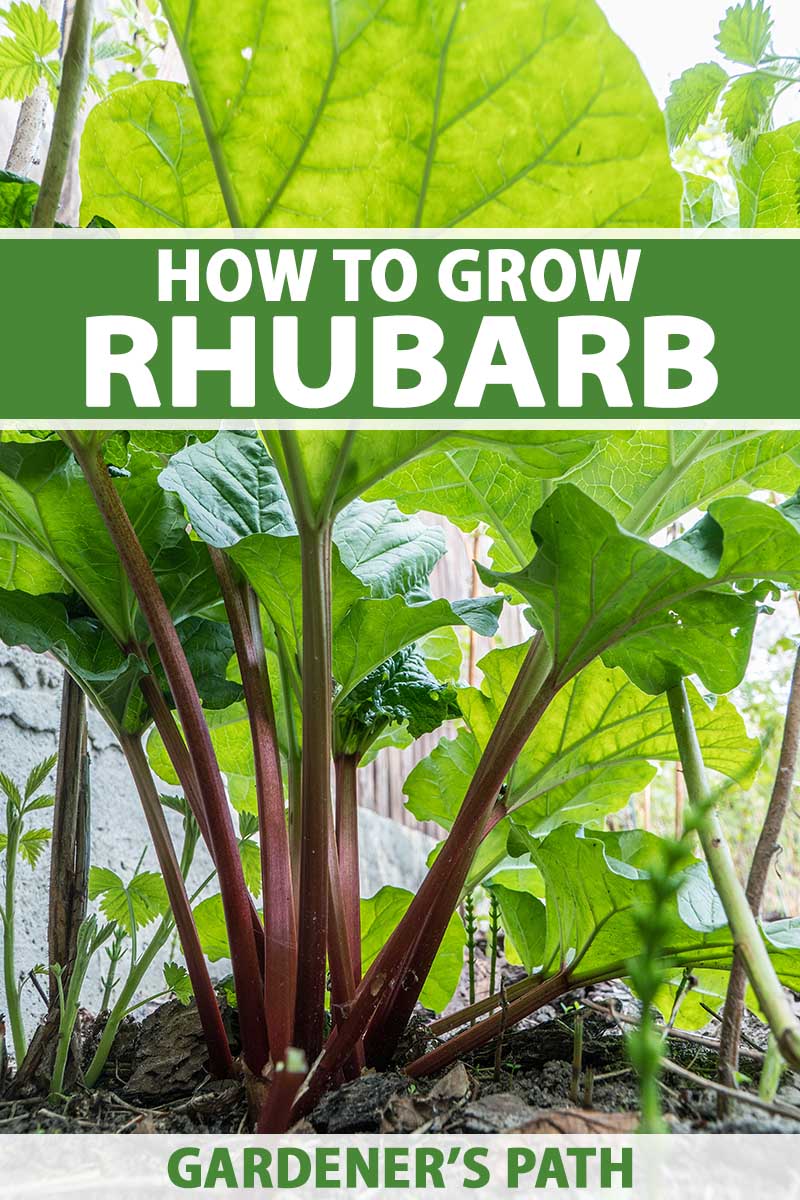
We link to vendors to help you find relevant products. If you buy from one of our links, we may earn a commission.
An early arrival in cool spring temperatures, rhubarb is popular in temperate regions where it grows vigorously from underground rhizomes, and it needs a cold spell for leaf buds to properly set.
This makes it ideal for northern gardens where these plants have long been a staple in backyard beds, farmyard gardens, and vegetable plots.
They do struggle in hot temperatures, but rhubarb can be grown in southern gardens as a winter annual.
The red-veined leaves make beautiful foliage plants and these are avoided by herbivores like deer and rabbits. And mature plants produce tall, frothy plumes of lacy white flowers, which attract pollinators such as bees and butterflies.
Beautiful and low maintenance with healthy, tasty stalks… Are you ready to add some rhubarb to your garden? Then let’s jump in to learn how to grow and care for these plants!
Here’s how the leaf unfurls:
What You’ll Learn
What Is Rhubarb?
A hardy perennial, rhubarb belongs to the genus Rheum and is grown for its long, edible stalks (petioles) which have a bold, sharp taste.
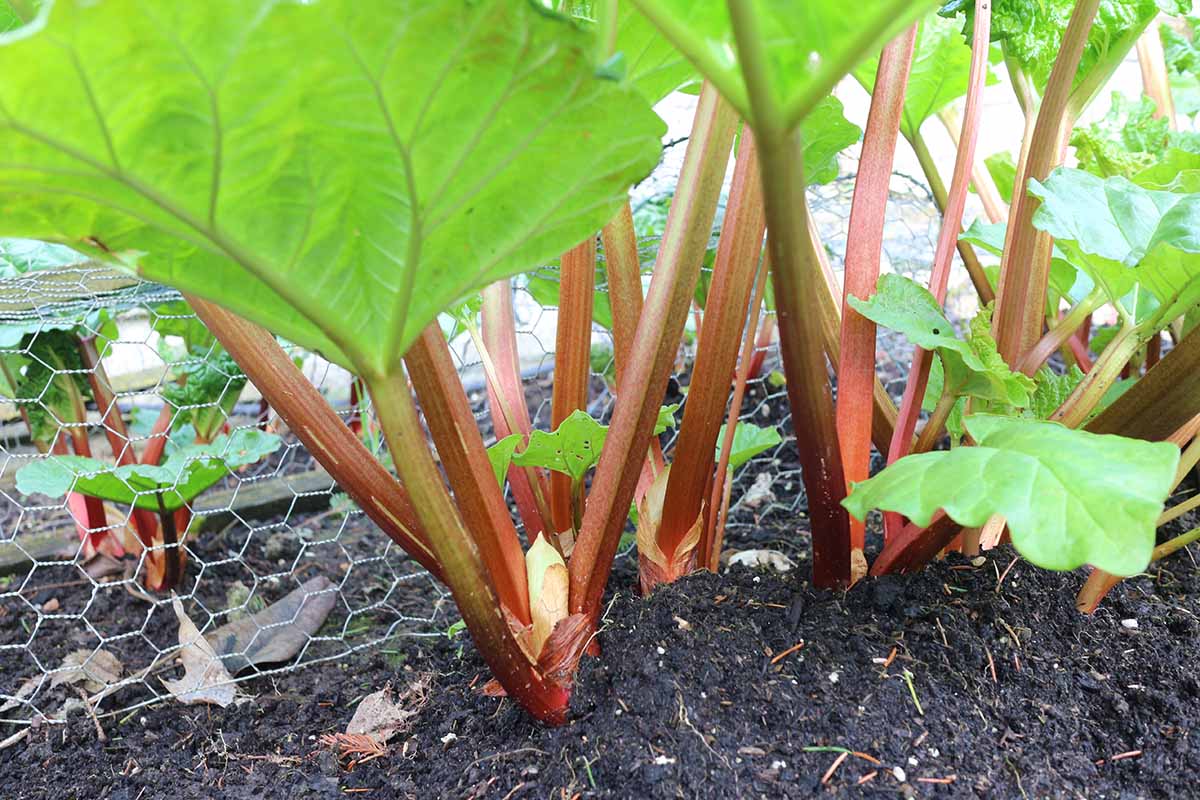
Growing from rhizomes, the stalks range in color from light green to pink to deep scarlet and are topped by large, heart-shaped leaves with a crinkly texture and ruffled edges.
The leaves emerge as large buds in early spring and unfurl with a fascinating display – like pink-tinged, green plant brains!
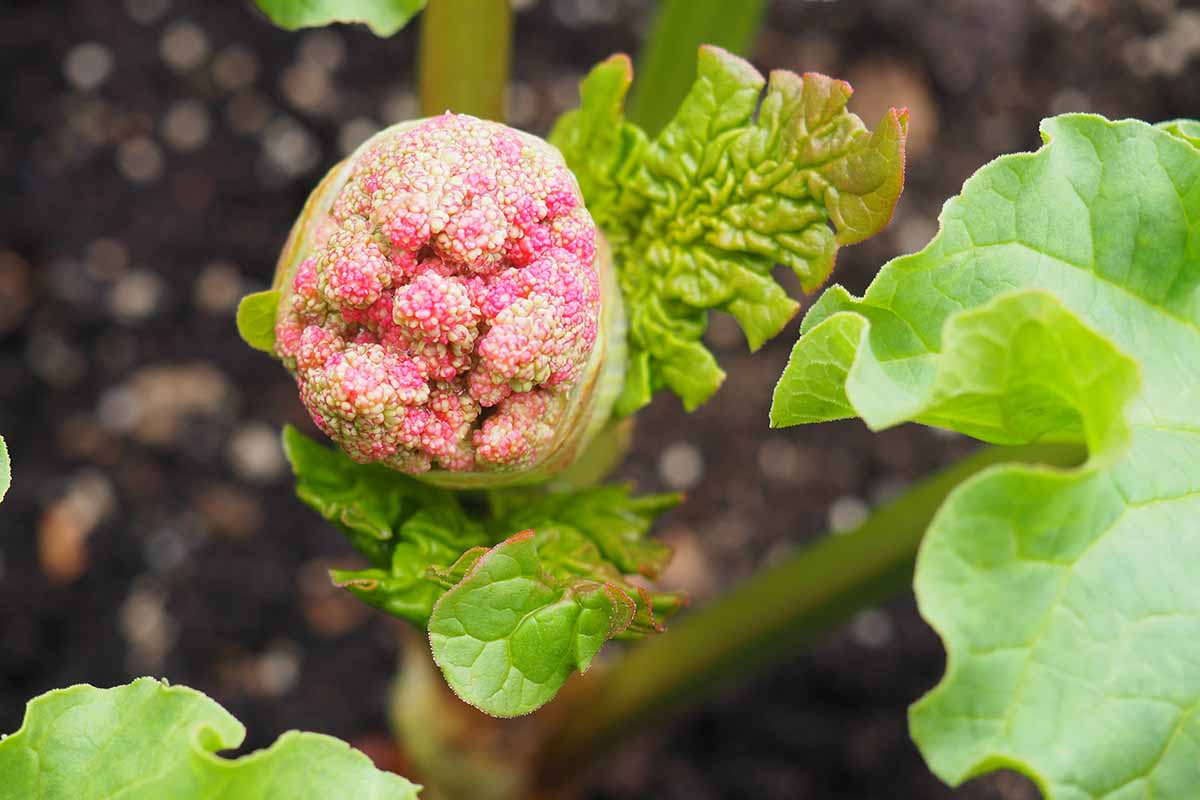
Today’s culinary variety, R. x hybridum, is an open-pollination cross thought to come from species previously used for their health or medicinal properties, including R. rhabarbarum, R. palmatum, and R. rhaponticum.
Garden rhubarb was once known by the species name R. rhabarbarum, but recent testing has shown most modern plants to be hybrids of R. rhabarbarum, with R. x hybridum becoming the accepted taxonomy.
Mature plants flower in early summer and feature beautiful, tall spires of frothy white flowers.
But don’t expect flowers until plants are a few years old, and note that heritage varieties are more likely to flower than newer hybrids.
Many gardeners remove the flower buds to concentrate energy into the leaves and stalks. But flowering doesn’t impact flavor or texture, and they add a lovely, astilbe-like charm to the garden beds.
Rhubarb crops well for several seasons and plants can live for up to 20 years, growing one to five feet tall and wide, depending on the variety and climate.
Hardy in USDA Zones 3 to 8, plants go dormant in fall and the rhizomes require a cold period of at least 500 hours in temperatures below 40°F for the proper formation of new buds.
Dormancy breaks when temperatures reach 40°F, and plants thrive in mild temperatures in the range of 60 to 75°F.
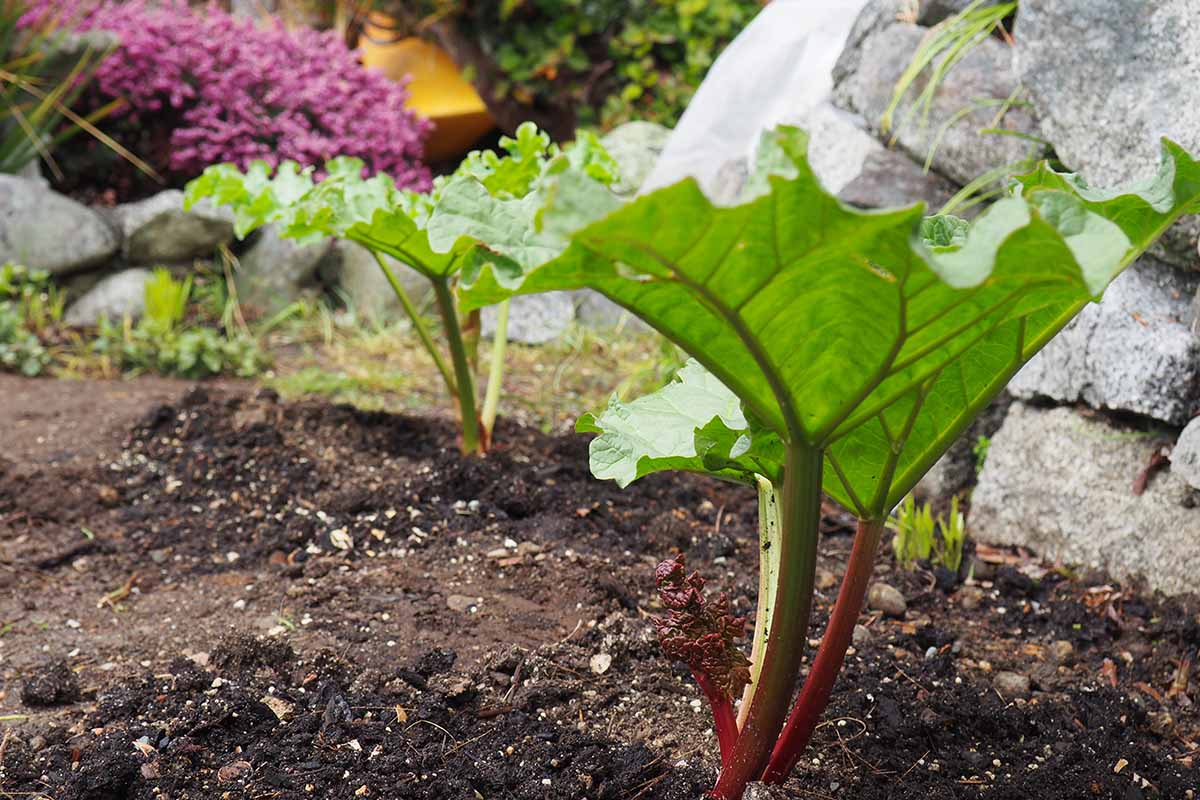
However, they do struggle once the mercury climbs over 80°F, and they won’t survive in consistent temperatures over 90°F. Provide shade in areas with hot afternoon sun.
Gardeners in warmer zones have luck growing rhubarb as a winter annual, discarding the rhizomes in spring as temperatures heat up.
Please note that the leaves are toxic and should not be eaten because they contain high levels of oxalic acid.
However, they are perfectly safe to go in the compost and do not have any detrimental impact on compost quality – oxalic acid is not readily absorbed by roots and degrades quickly when plant cells break down.
Cultivation and History
Native to the areas of southern Siberia and northwestern Mongolia, rhubarb has a long history in traditional Chinese medicine.
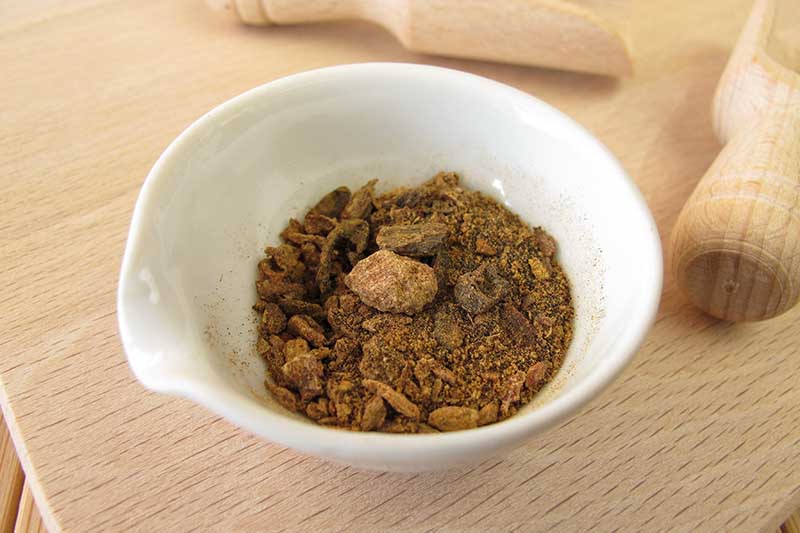
One of the earliest references to Rheum use can be traced back to 270 BCE in an ancient text known as “Shen Nong Ben Cao Jing,” or “Shen-Nong’s Herbal Classics,” a compilation of oral traditions about agriculture, herbs, and medicinal plants.
In the Greco-Roman cultures, it was used medicinally to combat many ailments – but importing it along Silk Road routes was expensive and it commanded a price similar to valuable spices like cinnamon, saffron, and pepper.
Planted as a medicinal in medieval European gardens, it wasn’t until the early 18th century that it was grown as a food plant.
And it didn’t become popular until the end of the century when European beet sugar became an affordable and available replacement for pricey, imported cane sugar.
Plants arrived in North America in the mid-1700s for their reputed healing properties but they weren’t used for culinary purposes here until the mid-1800s.
Botanically a vegetable, rhubarb is often referred to as a fruit because that’s how we use it culinarily.
Also known as pie plant, the stalks are most often cooked with sugar to counter the keen, biting flavor and made into savory dishes like chutney, ketchup, and salsa, or sweet ones like cakes, crumbles, ice cream, and naturally, pies.
Often combined with strawberries in baked goods, other flavorful blends include sliced apples, berries, currants, kiwi, and gooseberries.
The tangy stalks can also be eaten raw, but usually only by young children who don’t know better! (Shared memory, anyone?)

Seriously, the flavor of the raw stalks is highly acerbic and much enhanced with a touch of sugar or maple syrup.
Rhubarb also has a strong nutritional profile. It’s rich in antioxidants such as anthocyanins and vitamin K, and contains beneficial amounts of vitamin C, calcium, and fiber.
Rhubarb Plant Propagation
Rhubarb can be propagated from seed, but crown division is the easiest, fastest, and most reliable method for new plants.
From Seed
In early spring about eight weeks before the final frost, fill individual four-inch pots with a good potting or seed-starting soil mix.
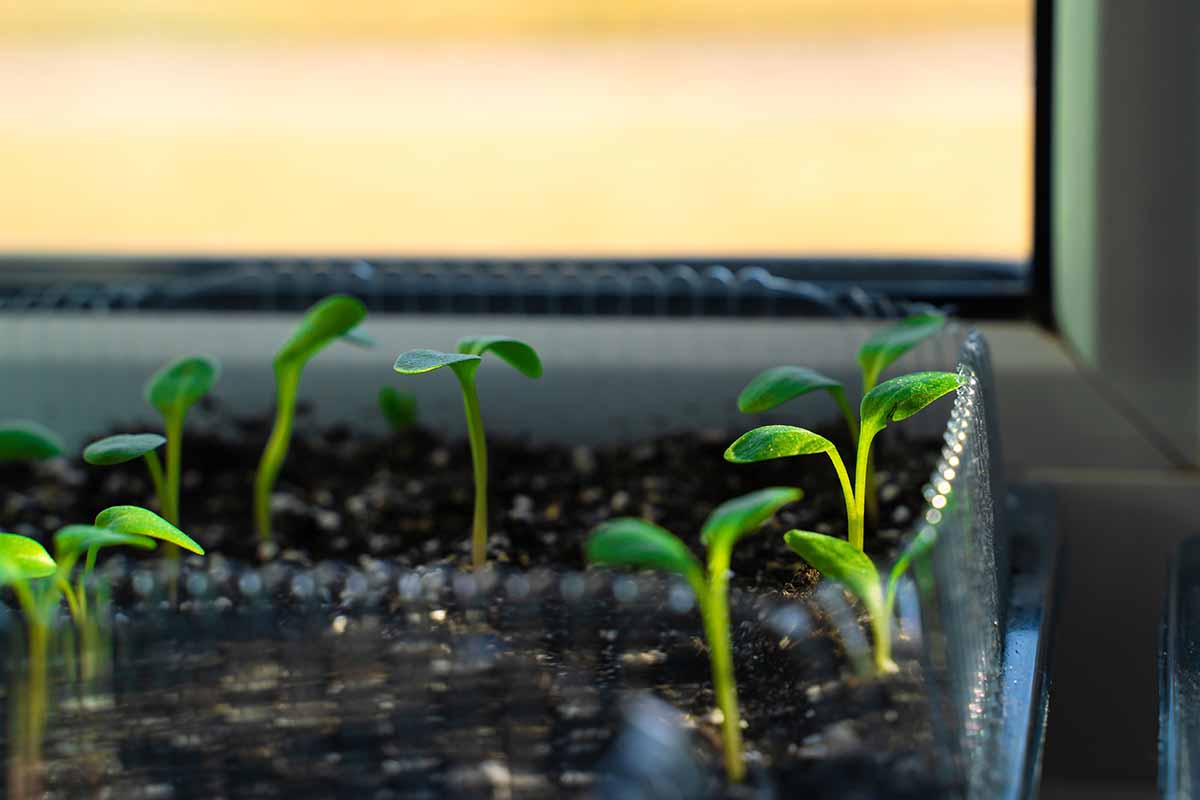
For southern gardens, sow seeds in late summer.
Place two seeds into each pot, sowing them one-half to one inch deep.
Water lightly to moisten the soil and keep at room temperature (60 to 75°F). After sprouting in five to 10 days, move to a bright window or place under a grow light.
When seedlings are three or four inches tall, move them outdoors to a slightly shady location to harden off for seven to 10 days, increasing the time spent outdoors by about an hour each day.
Keep the soil moist, but not soggy.
After hardening off, plant out into a sunny spot with fertile, well-draining soil.
Potted seedlings should be transplanted at the same depth at which they are growing in their pots.
Depending on the variety, space plants one to three feet apart to accommodate their spread.
To reduce the risk of transplant shock, plant out on a cool, cloudy day – hot sunshine on the large leaves can cause plants to droop.
For more seedling details, check out our guide on how to start rhubarb from seed.
From Divisions
Division is the best way to rejuvenate old plants and it’s the easiest, fastest, and most reliable way to propagate new ones.

In early spring before new shoots emerge, or in autumn as plants enter dormancy, dig out the entire root ball. Fully insert a spade all the way around the roots, about six inches out from the crown, and lift out.
Use a clean, sharp garden knife to divide the root ball into equal sections, ensuring each piece has one to three eyes (buds) and a healthy section of rhizome – the more buds each section has, the bigger the plant will ultimately grow to be.
Very old plants can develop hard, woody rhizomes and you might need a garden saw or hatchet to sever them.
For the healthiest divisions, replant promptly, following the steps outlined below.
Transplanting
Divisions and nursery crown stock can be planted in early spring as soon as the soil can be worked, or in autumn when plants are dormant.
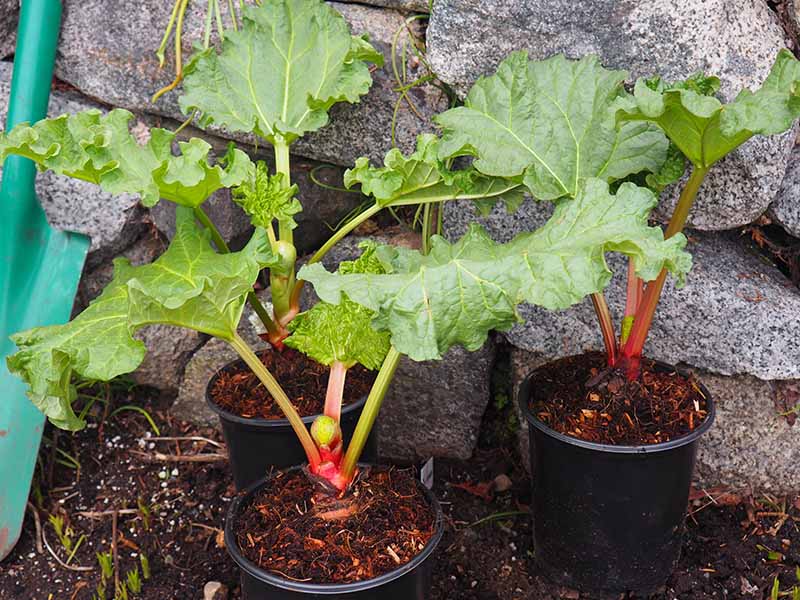
Prepare the planting site by loosening the soil to a depth of 12 inches.
If your soil is clay-based or dense, create a four- to six-inch mounded hill to improve drainage and prevent root rot.
Mix in two parts of organic material such as compost or well-rotted manure with two parts garden soil.
To improve drainage, add one part grit, such as landscape sand, pea gravel, perlite, or stone chips.
To help maintain moisture in the root zone, add one part moisture-retentive materials such as coconut coir, peat moss, or vermiculite.
A “part” is used to measure roughly equal proportions. For our six-part soil recipe, a part could be a bucketful or shovelful – size isn’t important as long as the proportions are the same.
Stir in one or two tablespoons of bone meal for strong, healthy roots.

Plant divisions or nursery stock about six inches deep with the crown one to two inches below the soil and space plants one to three feet apart.
Backfill and firm the soil gently but avoid tamping down the crown area.
How to Grow Rhubarb
Heavy feeders, rhubarb likes deeply cultivated, well-draining, and fertile, loamy soil that’s rich in organic matter. They also need full sun and do best in slightly acidic soil with a pH of 5.5 to 6.5.
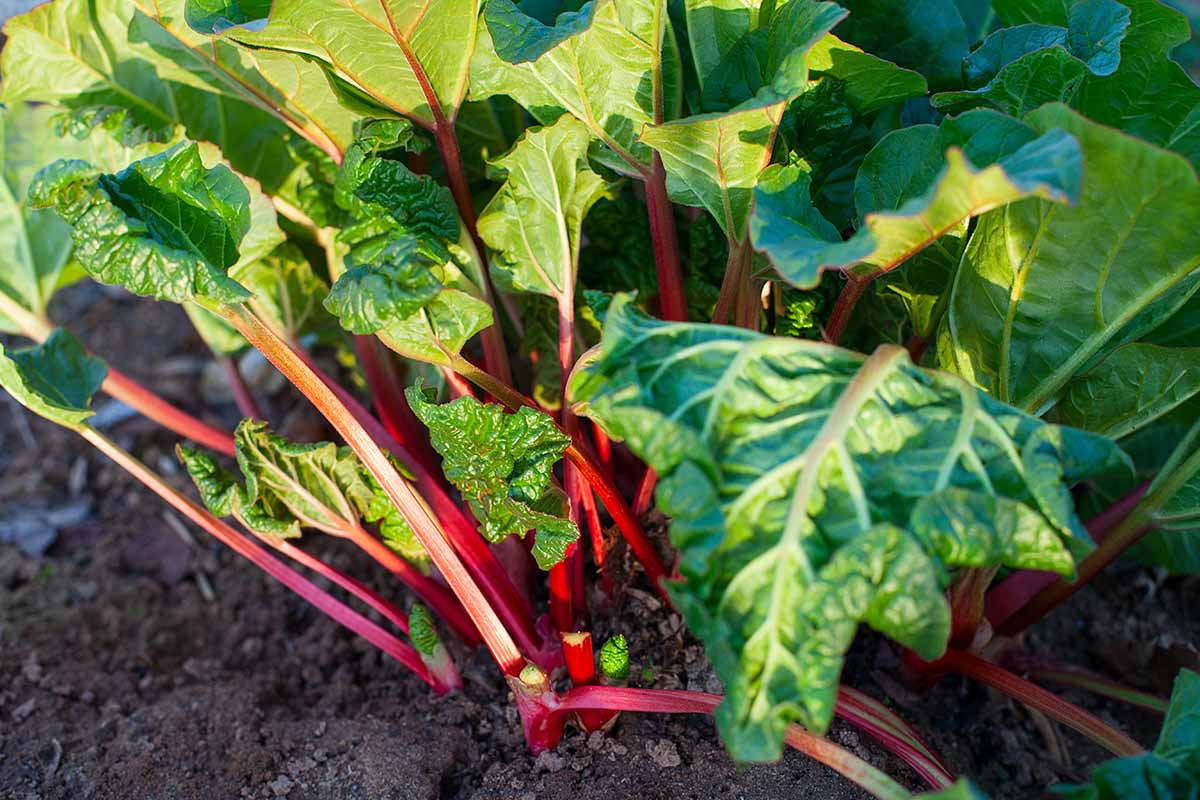
Provide up to two inches of water per week, keeping the soil lightly moist but not wet.
Rhubarb can also be grown in containers, but you’ll need one that’s fairly large. And container plants need to be divided more frequently, usually every three years.
As a companion plant, rhubarb benefits brassicas such as cabbage, kale, and cauliflower with their ability to deter whiteflies.
They also protect beans by repelling aphids and in return, enjoy the extra nitrogen beans leave in the soil.
Growing Tips
Rhubarb is easily cultivated and the following tips ensure vibrant, healthy plants with plenty of tartly tasty stalks.
- Grow in full sun and provide protection from hot afternoon sun if needed.
- Rheum does not do well in waterlogged conditions. Ensure your soil is well draining or plant in mounded hills to keep the roots healthy.
- Provide one to two inches of water per week.
Maintenance
Apply a thick, four- to six-inch layer of compost over the root zone in spring.
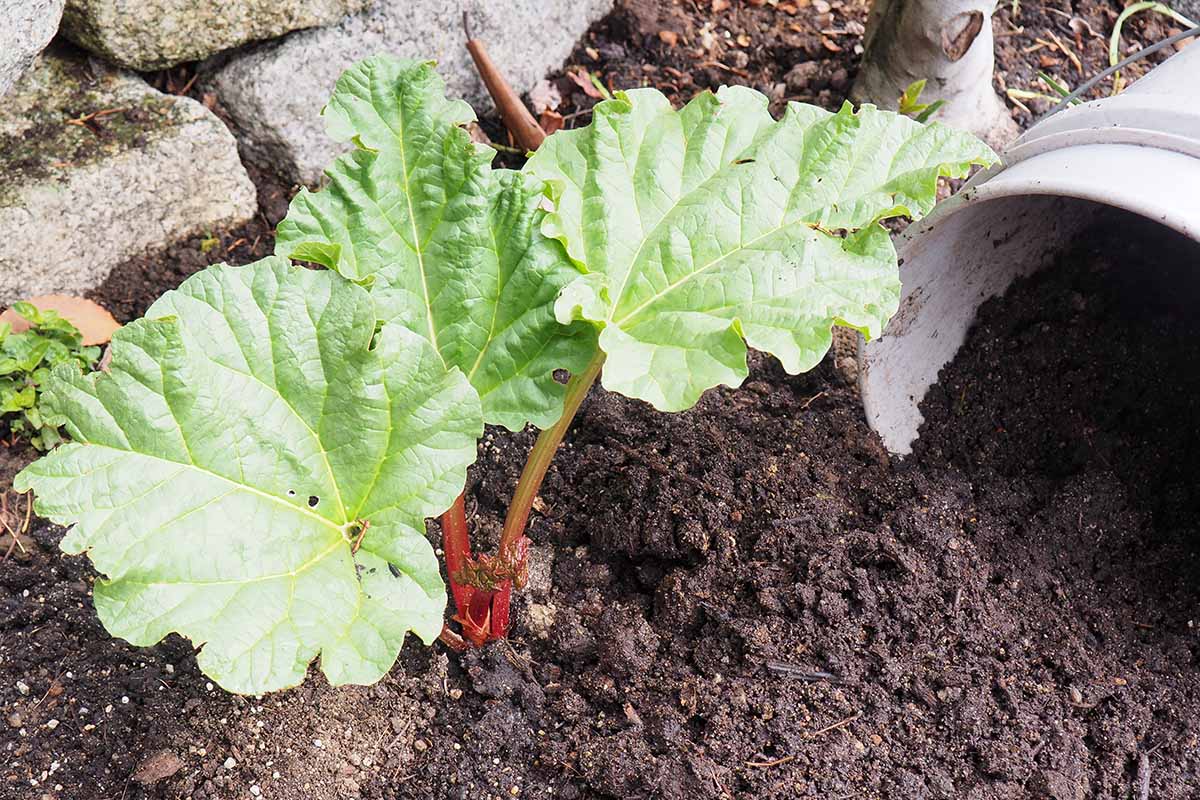
In early summer, apply a four-inch layer of bark mulch, leaf mold, or straw to keep roots cool and help retain moisture, but keep it a few inches away from the crown.
Fertilize plants in early spring with an application of slow-release pellets scratched into the root zone and reapply in midsummer.
Keep the pellets away from the crown to avoid burning and use a balanced formula such as 10-10-10 NPK.
In northern gardens where you are growing these plants as perennials, after the growing season ends cut back foliage to the ground and clean beds of decaying vegetative matter and debris.
To protect the root stock from freeze/thaw cycles, in autumn remove old summer mulches and apply a six-inch protective mulch over the root zone and crown.
Use mulch materials such as compost, pine boughs, or straw. Remove winter mulches in early spring.
Dig up and divide the roots every five years or so when plants are dormant – the steps for doing this are outlined in the Propagation section above.
For southern gardens, where rhubarb is grown as an annual, dispose of crowns in the compost pile after your last harvest.
Rhubarb Cultivars to Select
With close to 100 cultivars available, there are plenty to choose from. Here are some favorite maincrop – harvested from April onwards – varieties to get you started:
Chipman’s Canada Red
With an exceptionally sweet flavor and crisp texture, the deep red stalks of ‘Chipman’s Canada Red’ are a favorite for baked goods, compotes, and preserves that require less sugar.
High yielding, they quickly form large clumps of thick stalks with a mature size of two to three feet – and their fast growth makes them a good choice to grow as a winter annual in warm areas.
Hardy in Zones 3 to 8.
Container plants are available at Nature Hills Nursery.
Crimson Red
Popular for compotes, jams, and pies, ‘Crimson Red’ produces plump, ruby red stalks with a sweetly tart flavor.
This non-stringy variety grows 24 to 48 inches and has plenty of ornamental merit with beautiful green leaves and bold spikes of creamy white flowers in early summer.
Hardy in USDA Zones 3 to 8.
Extra-large ‘Crimson Red’ roots are available from Burpee.
Hardy Tarty
With outstanding heat tolerance, Hardy Tarty™, aka ‘Colorado Red,’ makes a good choice for northern or southern gardens, with thick stalks that are tartly tasty for baking, jams, and preserves.
The fast-growing, bright red stalks grow on compact plants that reach 24 to 30 inches and rarely bolt to seed. Hardy in Zones 3 to 8.
Bare root stock is available at Walmart.
Victoria
Excellent for cooking, with a sweet, mild flavor, ‘Victoria’ features plump, thick stems with crimson-tinged or bright red skin and a non-stringy texture that’s ideal for crumbles, pies, and preserves.
A steady producer, flower stalks can reach up to six feet tall with small cream to pink flowers in midsummer. Hardy in Zones 3 to 8.
If you’d like to try your hand at cultivating some heirloom seeds, you can find ‘Victoria’ seed packets available via True Leaf Market.
And live plants or rootstock can be purchased at Burpee.
Managing Pests and Disease
Rheum species and cultivars are fairly free of pests and diseases, though there are a few to keep an eye out for.
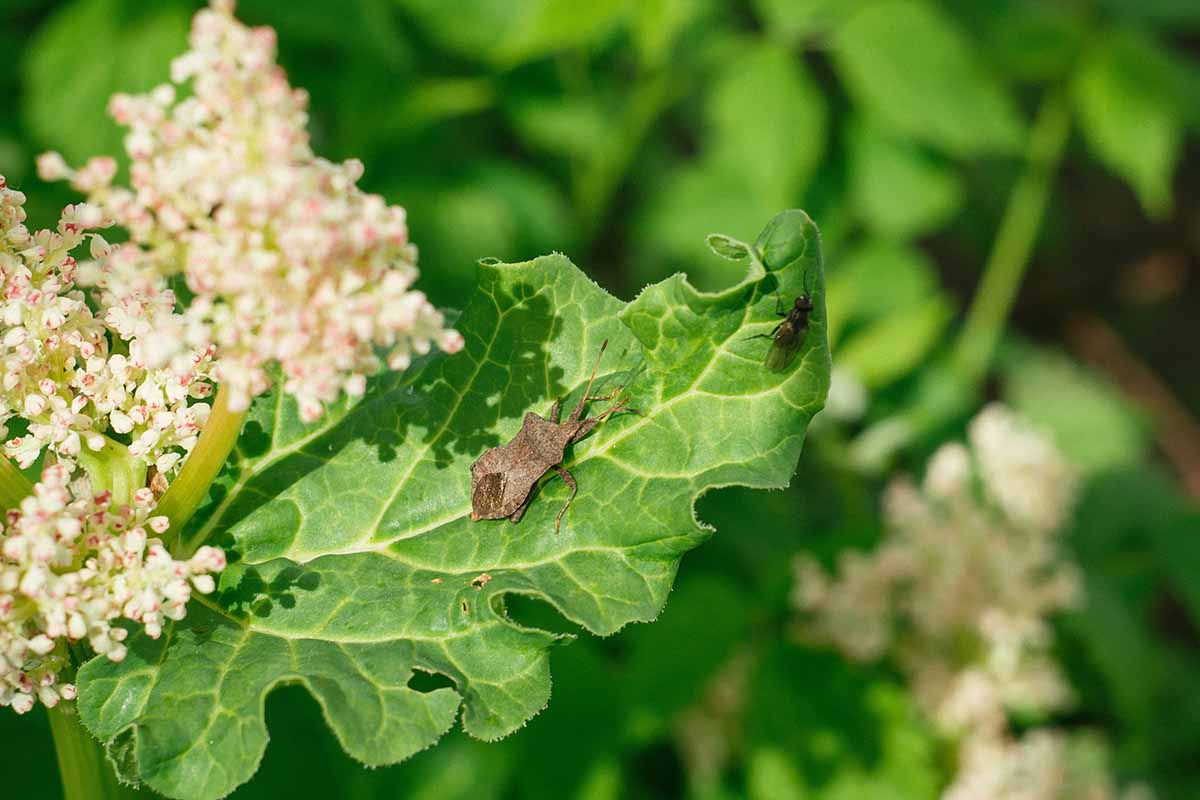
Like the rhubarb curculio (Lixus concavus). This half-inch-long beetle is dark colored, with a long snout that curves downwards.
They should be handpicked from plants when spotted. Or sprinkle diatomaceous earth around your garden beds to repel them.
If you see evidence of tiny mites, such as yellow spots on the leaves, or foliage that becomes dry and crumbly, treat them with neem oil.
A good option is this one from Bonide, available in pint, quart, and gallon sizes via Arbico Organics.
Fungal leaf rot can happen if the foliage remains wet for too long, or if plants are too crowded with poor air circulation. Most often, only the leaves are impacted, not the stalks.
Harvest stalks with impacted leaves first, and carefully remove and dispose of the leaves (not in the compost) so as not to spread the fungus. Water at the base of plants to avoid wetting the leaves.
Phytophthora crown rot can occur if the plants’ subterranean parts sit in too much water for too long.
To avoid crown rot, be sure to plant in well-draining soil or plant in hills to improve drainage.
Harvesting Rhubarb
With divisions or newly planted nursery stock, wait until the second or third year of growth to harvest.

This is to develop strong, healthy roots for vibrant, large plants with plenty of juicy stems.
And to do that, the leaves are needed to convert the sun’s energy into food – no leaves, and the roots stay small. So it’s best to be patient… it does pay off!
Early varieties like ‘Glaskin’s Perpetual’ and ‘Timperley Early’ can be harvested starting in March and April with maincrop varieties ready in April and May – both types are harvested throughout the summer.
Choose stalks that are at least 10 inches long, picking a few stalks per plant. To avoid stressing plants, take care not to harvest all the stalks from a given plant at once.
For perennial clumps, let some leaves remain in place over summer to generate energy for next year’s growth.
For annuals, harvest all the stalks when temperatures rise and stay above 75°F.
To harvest, grab a stalk at the base then pull down and twist sideways – it should break off easily. You can also cut the stalks with a clean, sharp knife.
Immediately cut off the leaves and put them in the compost bin – unless they are diseased. In that case, seal them in a bag and dispose of them.
Cut stalks can be stored in the refrigerator for up to two weeks. Wrap them in plastic or stand them up in a container of water, much as you would fresh herbs, to keep them hydrated.
Preserving
Rhubarb’s fantastic flavor can be enjoyed in preserves as well.
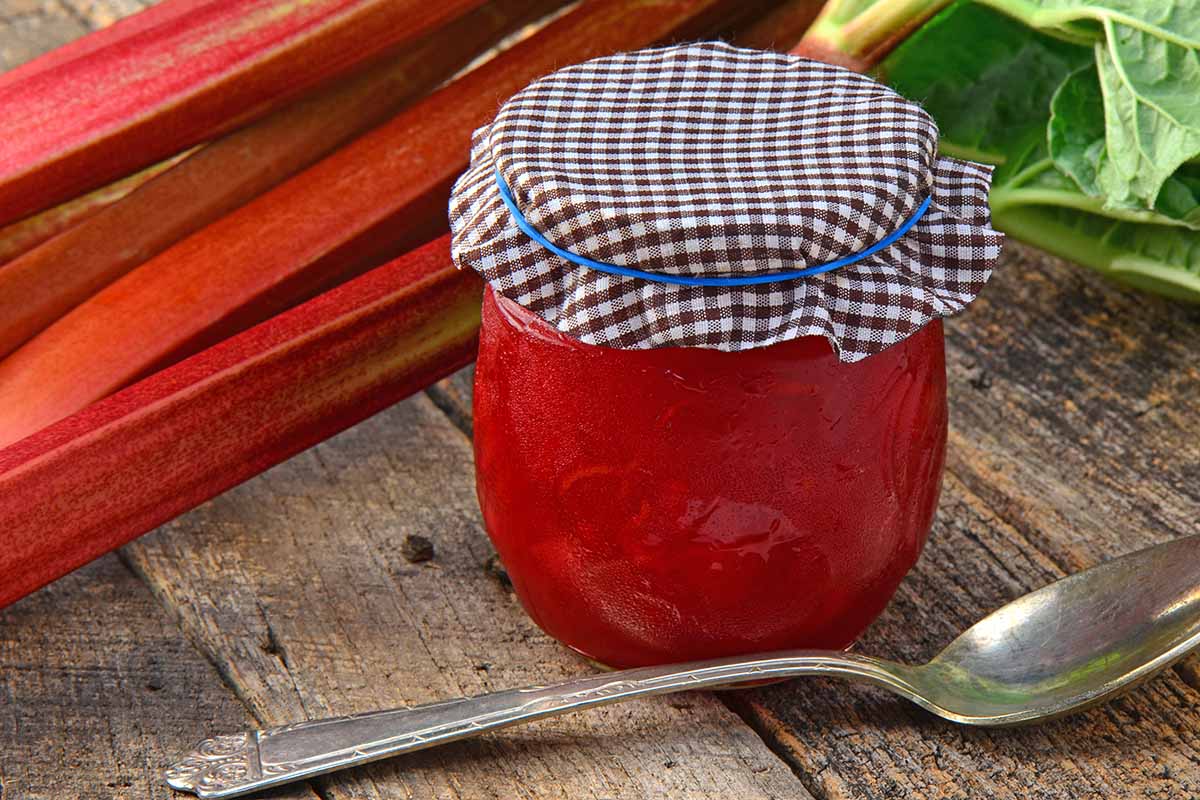
To freeze, cut clean, dry stalks into one-inch pieces and place in a single layer on a baking tray.
Freeze pieces until firm, about two hours, then pack into resealable containers and freeze for up to one year.
To dry, cut the stems into quarter-inch slices and spread in a single layer on dehydrator trays.
Dehydrate on the lowest setting until the texture is crisp. Store in an airtight container in a cool, dry cupboard.
Find more dehydrating tips here.
Canning in a hot water bath is another way to preserve the sassy stalks in delectable compotes, conserves, jams, and stewed fruit.
Recipes and Cooking Ideas
When dreaming about this fruity veg in the kitchen, an absolute must is the classic strawberry rhubarb pie featured on our sister site, Foodal.

Sweet and sour, it has an old-fashioned flavor that deserves a place on the modern table.
Also from Foodal comes a mouthwatering rhubarb buttermilk sherbet, featuring its unmistakable tart taste.
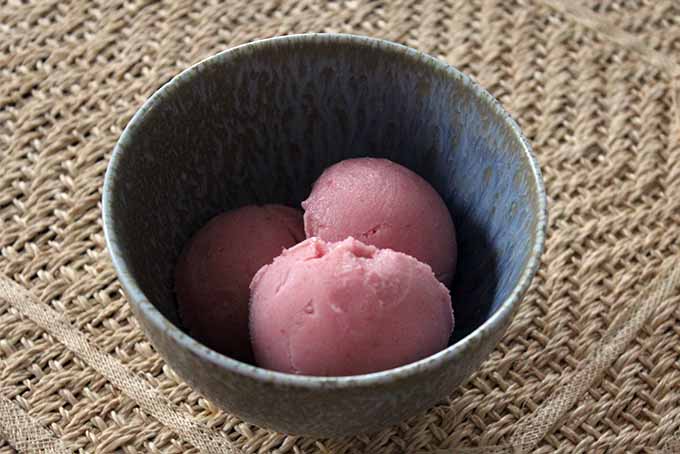
For even more rhubarb recipes, check out all that is available over on Foodal.
And don’t forget the humble but beloved crumble that Mum or Gran used to make. With or without strawberries, it’s always scrumptious!
Quick Reference Growing Guide
| Plant Type: | Perennial herbaceous vegetable | Maintenance: | Low |
| Native to: | Mongolia, Siberia | Tolerance: | Deer, rabbits |
| Hardiness (USDA Zones): | 3-8 | Water Needs: | Moderate |
| Bloom Time/Season: | Spring, summer | Soil Type: | Fertile, loam |
| Exposure: | Full sun | Soil pH: | 5.5-6.5 |
| Time to Maturity: | 2-3 years (divisions and crown stock) | Soil Drainage: | Well-draining |
| Spacing: | 1-3 feet, depending on cultivar | Attracts: | Bees, butterflies |
| Planting Depth: | 4-6 inches with crown 1-2 inches below the soil (bare roots); 1/2 inch (seeds) | Companion Planting: | Beans, brassicas |
| Height: | 1-4 feet | Family: | Polygonaceae |
| Spread: | 1-3 feet | Genus: | Rheum |
| Common Pests and Disease: | Rhubarb curculio, mites; fungal leaf rot, crown rot | Species: | x hybridum, rhabarbarum, rhaponticum |
Savories and Sweets
With its delicious tart flavor, rhubarb is a favorite for both savory dishes and sweet ones.
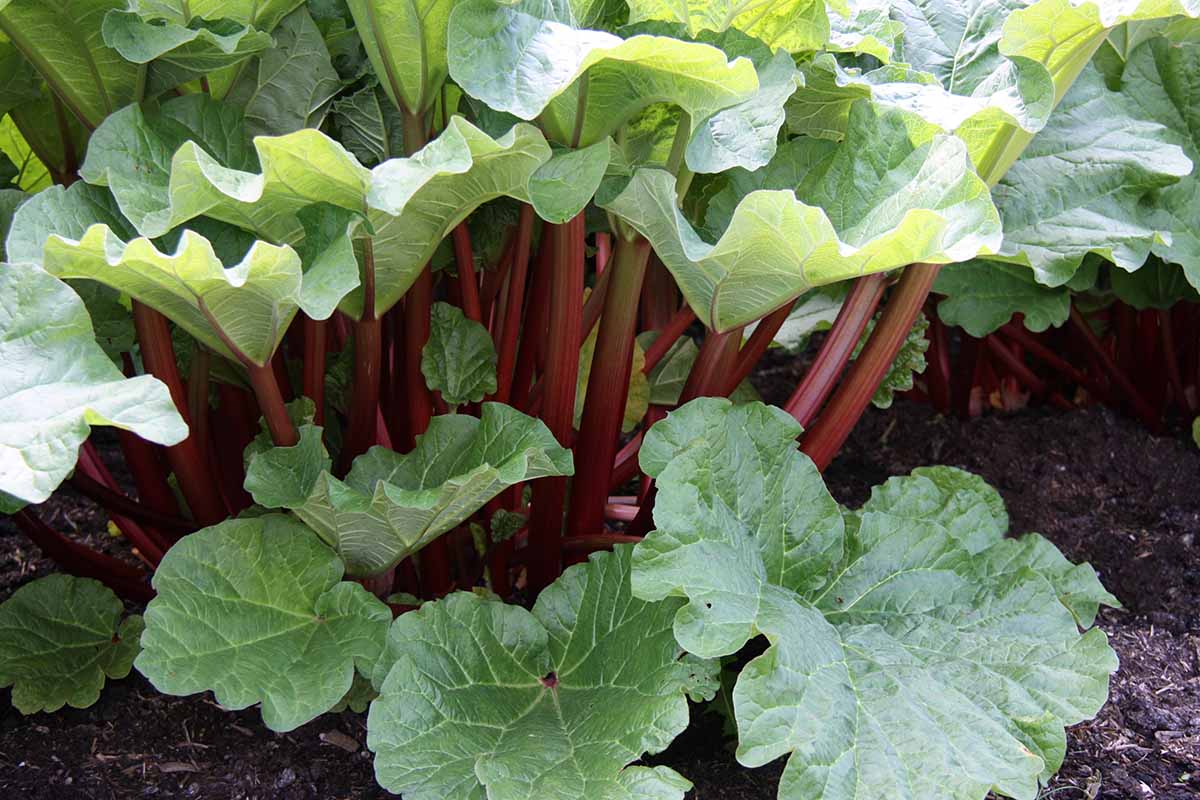
Ensure your plants receive enough water, fertilize regularly, and divide every five years or so to keep them vibrant and healthy.
You’ll have plenty of stalks for making crumbles, compotes, or pies, and still have enough to share with the neighbors!
How do you folks use your harvest? Let us know in the comments section below.
And for more cultivation ideas, be sure to read these rhubarb guides next:
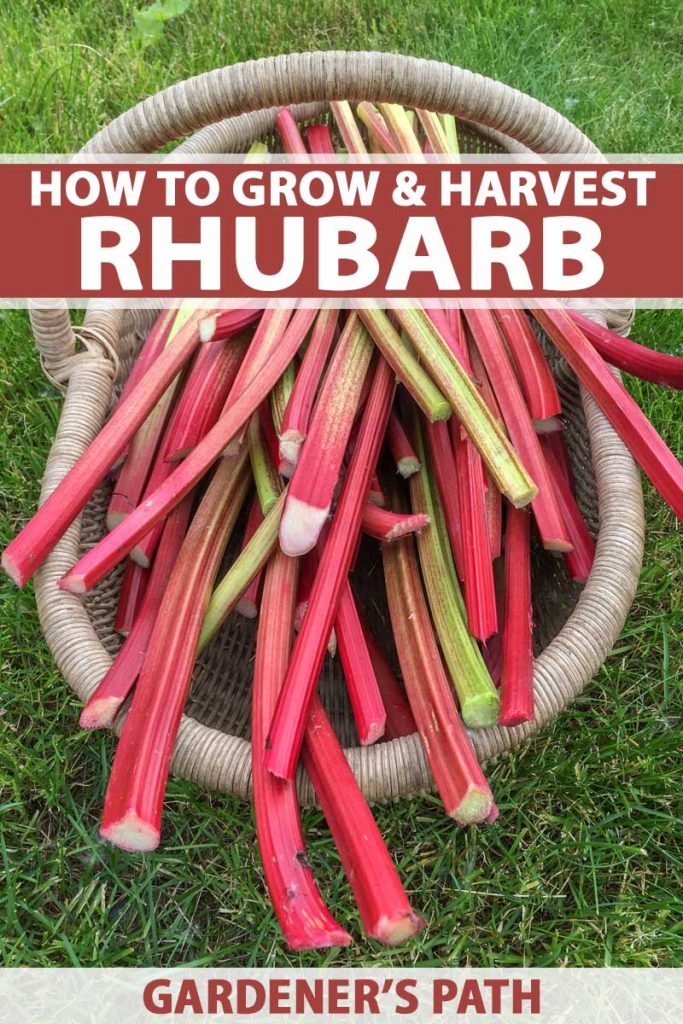
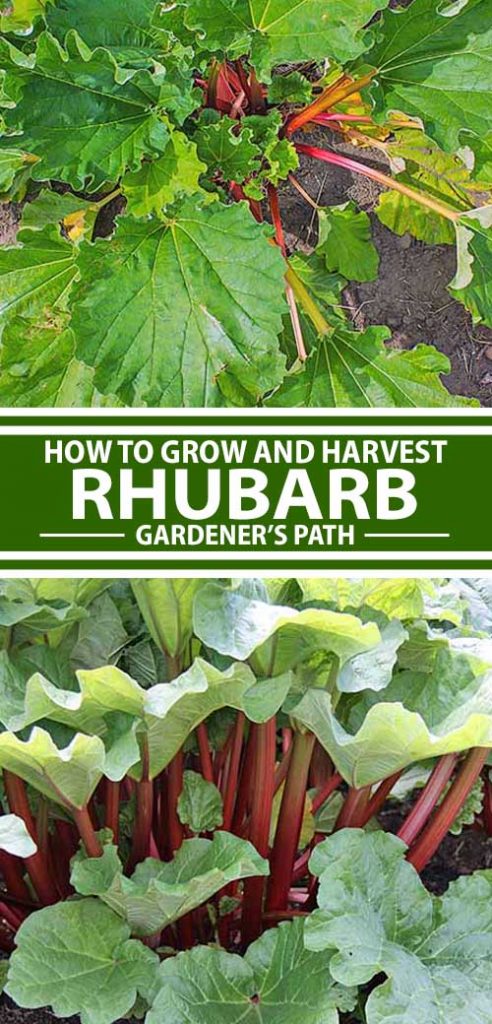
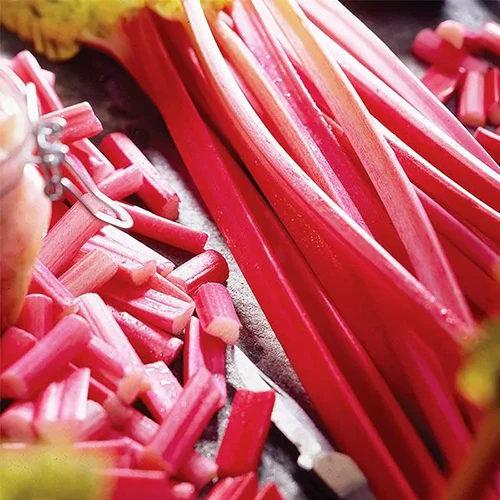
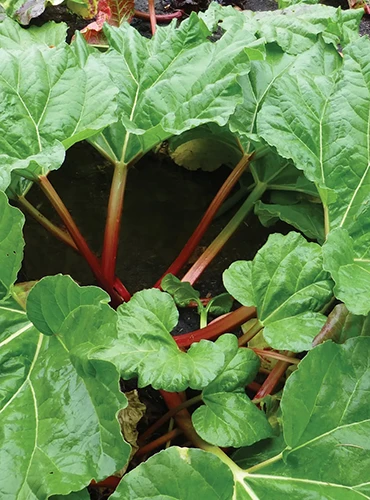
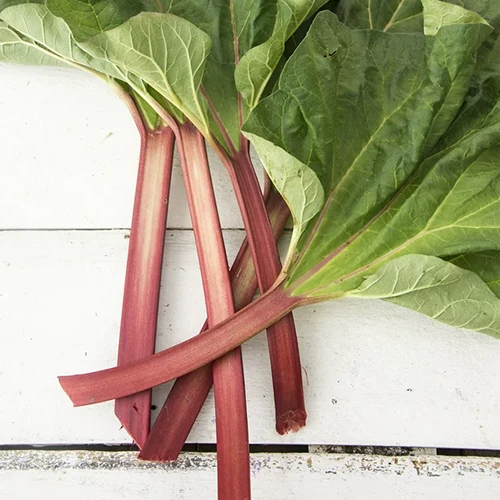
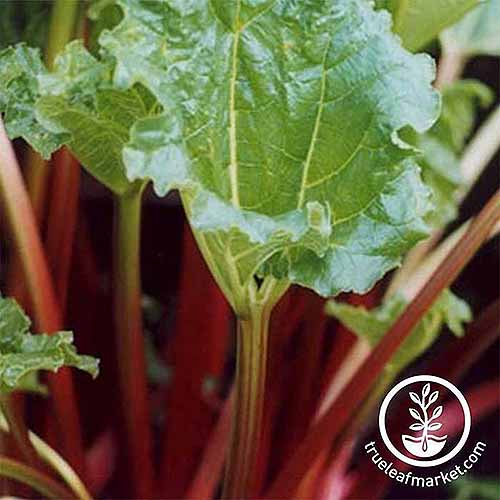
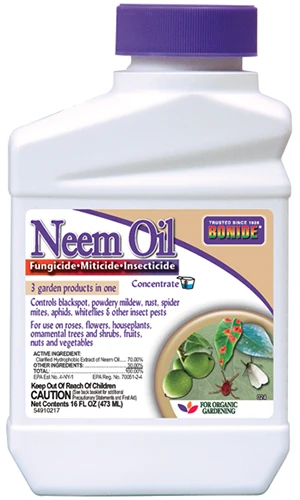

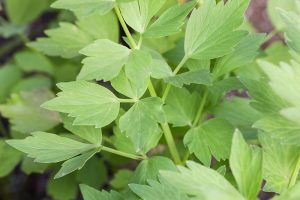

Wow, I have never grown rhubarb before and just never thought about it. However, you were very convincing that I need to try it out. It is a stunning plant as well.
Hi Jeremy! Love your post! Let us know if you do indeed try growing this plant, and post some photos!
Back in 1974/75 Organic Gardening publication advised to dig in wood ashes from the fireplace into to soil for planting rhubarb crowns. The claim was that it would both provide potasium and aid in prevention of winter rot of the crown when winter is overly wet, cold or long. I did this last year along with homemade compost for a 3 year old crown gifted to me by a co-worker. The crop was so bountiful it supplied the neighbors, my coworker and I rhubarb from late spring through December.
Awesome! Thanks so much for the great tip, Greg. Wow… all the way to December!
I am so glad to find this article. The rhubarb plant I ordered last fall has just shipped and I want it to grow well.
We always had it growing in our back garden when growing up in Ireland. As kids we would eat the stalks raw just dipping them in the sugar bowl. Last year I found some at our local Tom Thumb and introduced it to the hubby and our grown kids.
Oh, in Ireland! Wow! I love the story about the raw stalks and the sugar bowl. How did your husband and kids like it?
I have a greenish/yellowish bulb growing out of the middle of my rhubarb plant. What is it and should I not disturb it?
Can’t say for sure, Karen, but it sounds like this is the beginning of a new stalk. Our best advice is to wait and see what happens, and let it grow! Hard to say without seeing what you’re referring to, though. Feel free to send a picture.
Hi Karen, has the bulb developed into anything?
Wouldn’t that be seeds? Like soon after the bulb?
Hey Wendy, it’s hard to say for sure without a photo, but I think the “bulb” is coming from a flower stalk – the emerging flowers have a sheath-like covering that kind of looks like it could be a bulb!
But you’re right, the flowers emerge quickly and the sheath withers away as soon as blooming starts.
Thanks for reading!
My dad gifted us their plants when they moved, and we’ve been enjoying rhubarb since. Even give some away once in a while. Some years are better harvests than others, probably because of where they sit near the house, but we do get some every year!
How lovely to have a heritage plant, Doug. That makes it even more special. What is your favorite rhubarb recipe?
My mom always grew rhubarb when I was growing up and I planted some of my own a few years ago. The Victoria plants are green but tasty and growing well. I also have a crimson red that is a beautiful red color but the stalks only get about as big as a pencil. I have never picked anything from the plant and am wondering if I should be doing something different to get it to grow larger. Thanks!!
While some cultivars do produce thinner stalks than others, it sounds like your Crimson may be suffering from a lack of fertilizer, or overcrowding. Are these plants older than the Victorias, or maybe significantly younger? Plants under 2 years old have not yet reached maturity, while the older ones may benefit from division to give them some more space to grow, or amending the soil with additional fertilizer. Either way, skip harvesting from the plants with thinner stalks to allow these plants that may be suffering to keep their energy reserves intact.
Yesterday morning I made 14 pints of Strawberry Rhubarb jam or sauce.
We live in NW Illinois and our Rhubarb plants are abundant not only are they delicious in so many recipes they make good ground cover and keep most weeds away. I like them better then hostas because you can eat them! Lol
My favorite thing is that Rhubarb is the first thing to pop up after a cold winter!
Hi Cindy Carnry Sounds tasty! Actually hostas are edible (make sure they are actually hostas as there are a few look-alikes).
Cindy Carnry Sounds tasty! Actually hostas are edible (make sure they are actually hostas as there are a few look-alikes).
If you’ve got an over abundance, be sure to head over to our sister site, Foodal, where we’ve got a small collection of Rhubarb recipes going: https://foodal.com/tag/rhubarb/
I’m envious of your friends and neighbors who will get to sample your strawberry rhubarb creations!
I planted rhubarb about 12 years ago. We have had great harvests until about 3 years ago. Last year I did get a few stalks. This year it had grown a stalk straight up with the bundles of little flowers. Can these be used as seeds? It looks like an odd weed.
Yes, those will form seed heads, and you can plant the seeds. Plant in small pots in a rich medium, indoors. When they get to be about 3 or 4 inches tall, begin hardening them off outdoors, and after a week or so, you can transplant.
I really have no idea what type of rhubarb this is as it was there when we moved in 26 1/2 years ago. I never used it cuz was always leery on baking/cooking with rhubarb. Afraid it would be “stringy”. I have never touched it, never moved it, never dug it up in all that time. It just looks like one huge plant. I would probably kill it if I tried to dig it & transplant it. But you didn’t answer my questions, Now there are a bunch of thinner (size of a pencil maybe width wise, at least 12-18″… Read more »
Hi Linda! Thanks for reading this article! I would not use the spindly stalks, and I would divide your plants come springtime. Your plant is telling you it’s overcrowded.
Hi, though we grow, harvest, concoct with a variety of fruits, vegetables, herbs & though I’ve always liked rhubarb, growing it hadn’t really crossed my mind. But we’ve been enjoying some time in Denmark — Danes appear to love rhubarb & use it in lots of different forms, in chutneys, cakes, puddings, toppings, & some truly delicious (not overly-sweet) beverages. I’m hooked & it is clear that I’ll be looking for a spot to include rhubarb. Thanks for the nice article!
Thank you for the kind comment, Mahonia! Rhubarb is truly such a versatile plant. And once it’s established, it’s pretty easy to keep rhubarb happy.